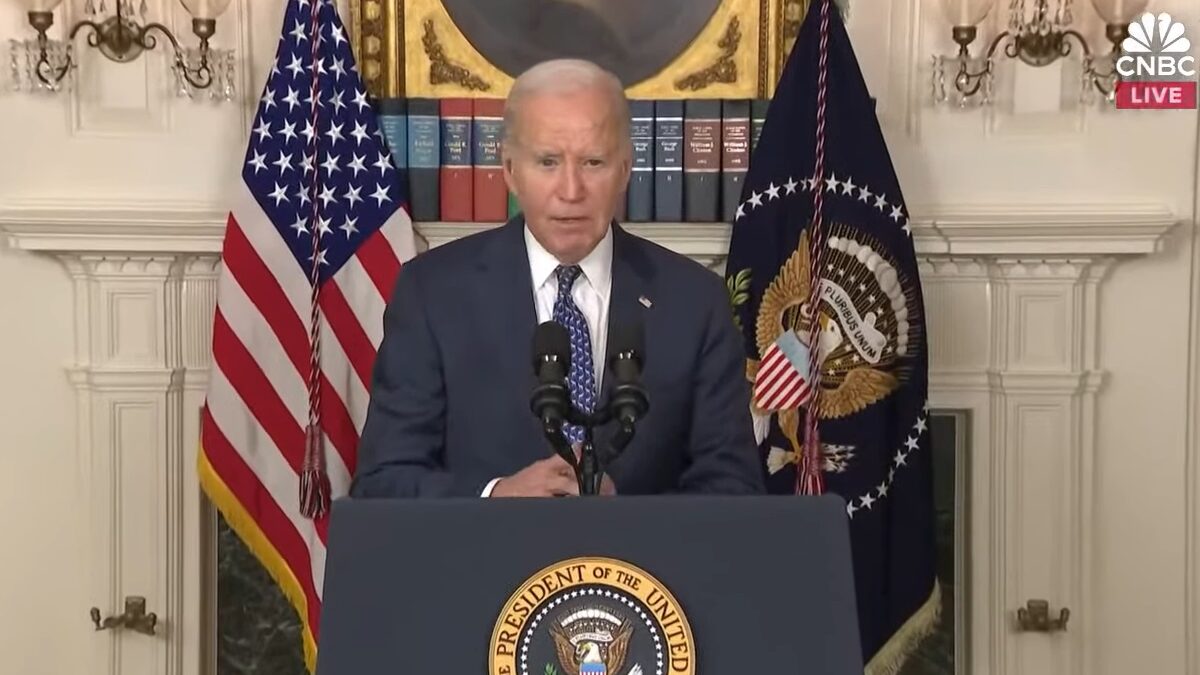
Steven Singer of The Huffington Post would have you believe that when parents have more choices, they have fewer choices. That’s the long and short of a recent article, “Top 10 Reasons School Choice Is No Choice,” which is basically a list of 10 bogus reasons for minimizing parents’ say in their children’s education. Let’s take a look.
Claim 1: ‘Voucher programs almost never provide students with full tuition.’
Singer claims vouchers would only be useful if they covered the entire tuition bill, and only give rich people discounts. That’s absurd for a number of reasons.
First of all, rich people often do not have legal access to voucher and tax-credit scholarship programs. Of the 47 voucher and tax-credit scholarship programs EdChoice counts, 26 are only available to families under a certain income level (24) or give priority to low-income families (2). So there are only 21 programs rich people can even make use of, 15 of which are for special-needs children.
Secondly, discounts matter. I once changed pharmacies because my prescription would have been more than $300 at one and around $8 at another. Singer’s logic would have me without the medicine I needed, because the discount I found didn’t cover the entire prescription cost.
Parent choice programs typically cover a few thousand dollars of tuition, and tuition at a typical parochial school usually runs a few thousand dollars. There are plenty of families who can’t afford $4,000 tuition but can come up with $1,000. Some schools geared especially for low-income kids deliberately charge the voucher amount for tuition because they’re targeting a demographic that can’t afford more.
If this is a system designed to give rich people discounts, it’s very poorly designed indeed.
Claim 2: Choice schools don’t have to accept everyone.
Singer would have you believe that charter schools and private schools receiving voucher money are cherry-picking the best students to stoke their egos and stats. This isn’t true, and even if it were, it would still provide more choices.
Some private and charter schools do have some type of admissions requirement, but most don’t. Tuition and waitlists are more common barriers to entry that vouchers and increased access to schools would relieve.
There’s also nothing wrong with admissions requirements. Some schools aim to meet a particular need, and can meet it better if they can create a particular type of culture. When there’s a culture of hard work, academic focus, and reaching goals, students are more likely to do these things. Or some schools orient themselves around specific concepts that do not appeal to every family: Montessori, Chinese-language immersion, and so forth.
Furthermore, the fact that some schools don’t admit some students doesn’t mean there’s “no choice.” Let’s say, hypothetically, that one child’s only option is the local public school. Another child in a different area can attend the local public school, or, if he passes an admissions test, attend a local Christian school. The second child has one option and a possible second; the first child has one option, period. Why cut off options for the second child just because every child doesn’t have the exact same ones?
Claim 3: Charter schools are notorious for kicking out hard-to-teach students.
Charter schools are also notorious for reaching out to hard-to-teach students and catering specifically to their needs. Skeptics might check out KIPP and Yes Prep charter networks, in addition to the dozens of independent charter and private schools following their models.
Claim 4: Choice schools actually give parents less choice than traditional public schools.
Here, Singer argues that while school boards are elected and parents can have their voices heard at public board meetings, private and charter schools are “not accountable to parents” and parents’ only option is to pull their children from the school.
This is actually the whole point of school choice. Parents ought to have the ability to “vote with their feet” if their current school is unsatisfactory. They also don’t have to leave to get this effect, because choice schools know the leave option is live, which makes it less likely parents will need it. When governments restrict access to schools, only the rich can vote with their feet by moving or paying private tuition.
Singer writes, “If you don’t like what your public school is doing, you can organize, vote for new leadership or even take a leadership role, yourself.” But seriously, who has time for that? Some people, yes, but not the single mom working two jobs to make ends meet. It’s a lot easier—and a lot faster, which matters in the life of a child—to enroll a child in a different school than to slog through the political process.
Claim 5: Charter schools don’t perform better than traditional public schools.
Both charter and traditional public schools range in quality from excellent to severely lacking. More important is the comparison between the schools available in your city or county. If your local charter schools are terrible, don’t send your kids there. If your local traditional public schools are terrible, well, you probably hope there’s another option.
Claim 6: Charters and vouchers increase segregation.
It depends on how you look at the data, but this much is clear: neighborhoods are often racially segregated, and when students are assigned to schools based on where they live, their schools will be segregated as well. School choice gives parents the option of sending their kids to schools outside their neighborhood-assigned school, preventing them from being forced to stay in a highly segregated school.
School choice programs, in Singer’s words, “either aid in white flight or leach away minority students.” That’s basically a scary way of saying white students and minority students can leave schools they find unsatisfactory. Well, they should be able to.
Anti-choicers should be cautious when using race to argue against school choice. Since most scholarship programs are reserved for children of low-income families, black and Hispanic students are most likely to be able to use them. President Obama’s administration tried using the desegregation argument to attack a Louisiana voucher program where 90 percent of voucher recipients were minorities. Then-governor Bobby Jindal, himself a minority, astutely noted the case “proves the people in Washington running our federal government are more interested in skin color than they are in education.”
Claim 7: Charter and voucher schools take away funding from traditional schools.
Well, sort of. Private schools charge tuition on a per-student basis, and public schools receive state funding in a similar way. Any time a student changes schools, the tuition money or per-pupil funding will no longer be available to the student’s original school. Why should schools receive money to educate kids they aren’t educating?
Of course, the costs associated with educating a child at any school aren’t exactly in line with per-pupil funding. Costs such as the number of custodians and administrators vary somewhat with the number of students, but not exactly.
Private schools deal with this all the time, and they don’t net more money per-pupil like public schools do when students leave. Public school administrators might consider learning how they manage it, or finding ways to decrease costs in other areas.
Claim 8: Funding a variety of schools would be wasteful and expensive.
Singer shows his cards when he brings up about “parallel school systems”: he is thinking bureaucratically, considering “school systems” instead of the actual children who are the reason schools exist in the first place.
Claim 9: School choice distracts from the real problems: poverty and funding equity.
Throwing money at problems is a terrible idea when bureaucracies are involved, because this typically results in administrative bloat with no actual improvements. Fun fact: There was a 702 percent increase in non-teaching administrators at public schools from 1950 to 2009, compared to a 96 percent increase in students. There wasn’t any significant increase in student achievement during that time.
Public schools should do what the rest of us have to: look for smart ways to spend less. Teachers often purchase classroom supplies out-of-pocket, which is given as evidence that schools need more money. Maybe, but it seems more likely a sign that someone up the bureaucratic chain is making poor financial choices.
Without that increase in administrators, for example, every public school teacher’s salary could be raised by more than $11,000, or perhaps $10,000 with a $1,000 classroom supplies budget. Maybe Washington and state capitals need to hear that their regulations are too expensive. Maybe public schools could partner with local churches and community organizations to meet the needs of children in poverty (which is likely to be cost-effective). There are all kinds of creative solutions for people willing to look.
Singer is right that poverty is a huge issue. Why not let the charter and voucher schools who want to take kids in poverty take them? Many of these schools are deliberately designed to help kids in poverty, and they work.
Claim 10: School choice is supported by billionaires, not the grassroots.
More than 21,000 independently planned events took place during National School Choice Week 2017 in January. Apparently it is “baloney” to say parents want school choice, but that is like saying millennials don’t want the latest iPhone, or that people don’t like shopping on Black Friday. When products are sold out, we know demand is high.
When 5,500 North Carolinians apply for 2,400 available vouchers, or when nearly 8,000 Louisiana students are on voucher wait lists, or when Florida routinely bumps up the total number of tax-credit scholarships awarded in response to high demand, it’s baloney to claim parents don’t want school choice.
Like most anti-choicers, Singer relies on bad data, bad interpretation of data, conspiracy theories, and just making stuff up to discredit the school choice movement. Instead of trying to preserve a school system, let’s focus on getting kids the best education possible—at whatever school is right for them.









